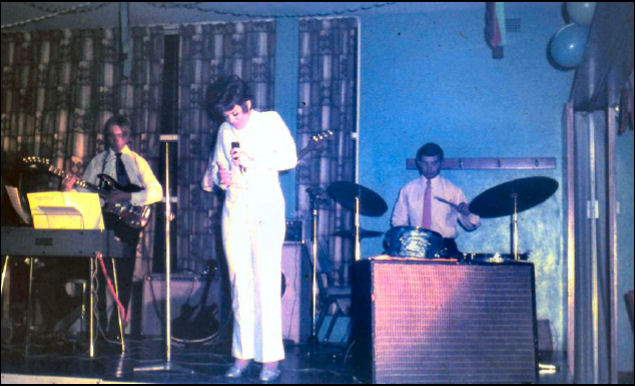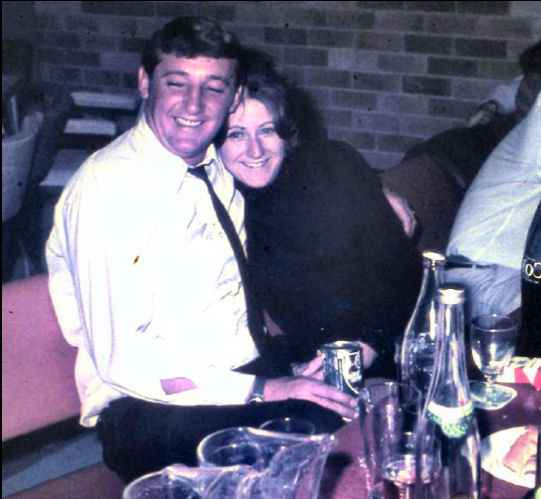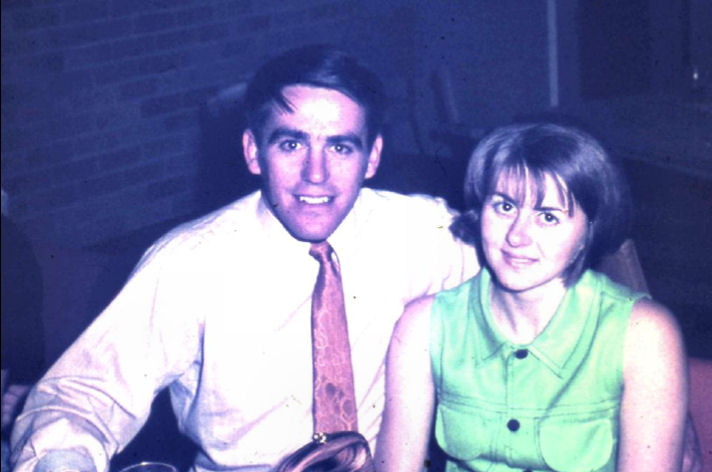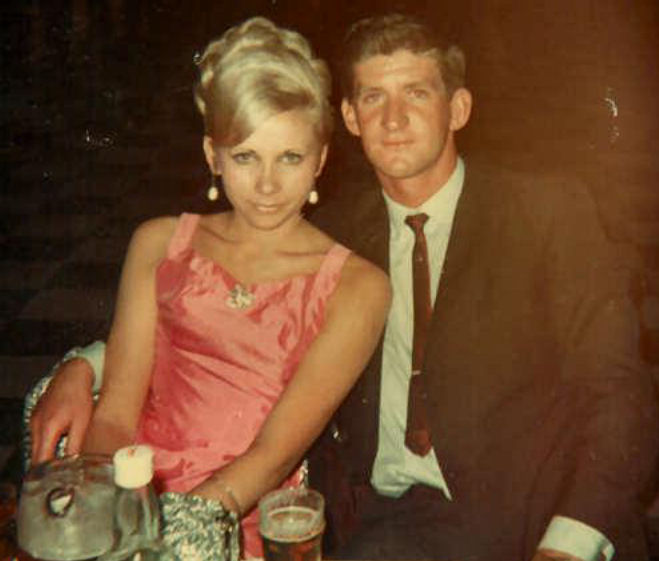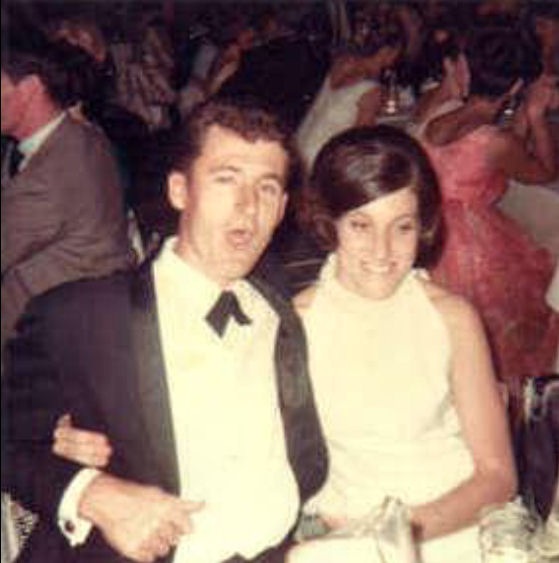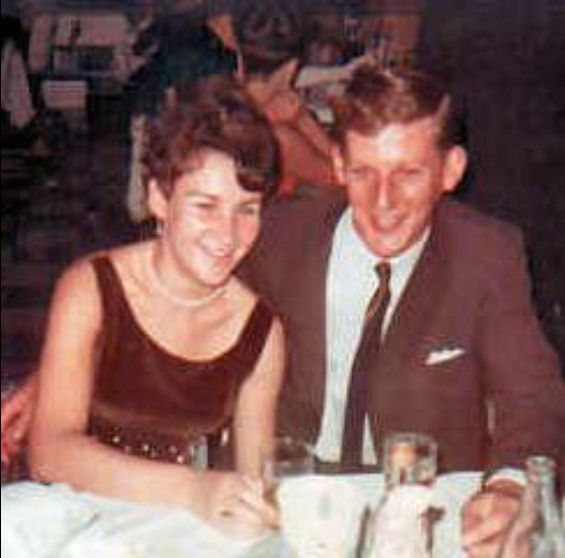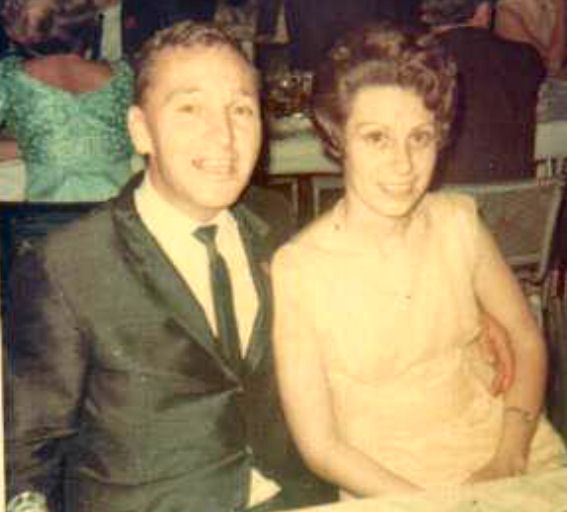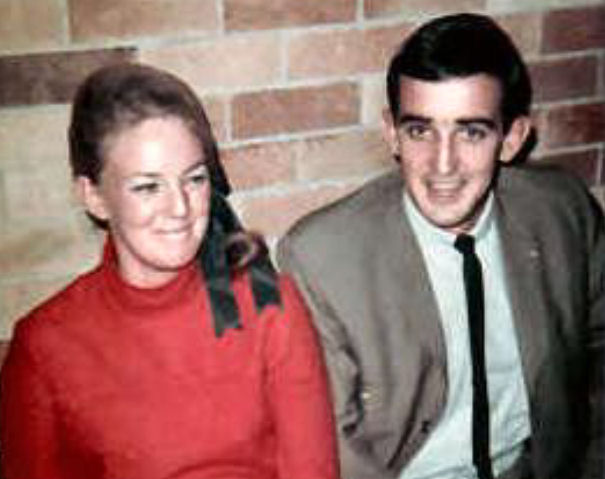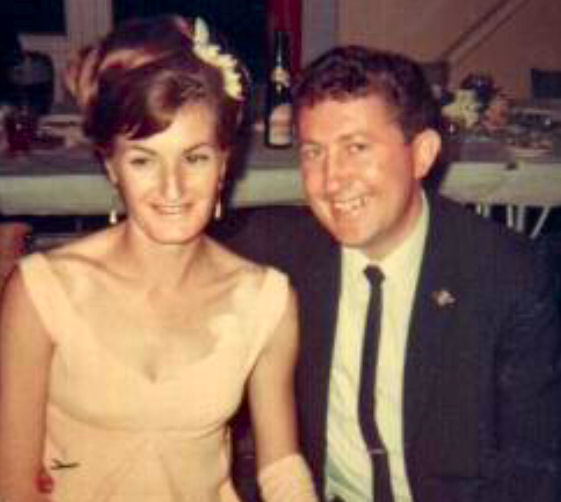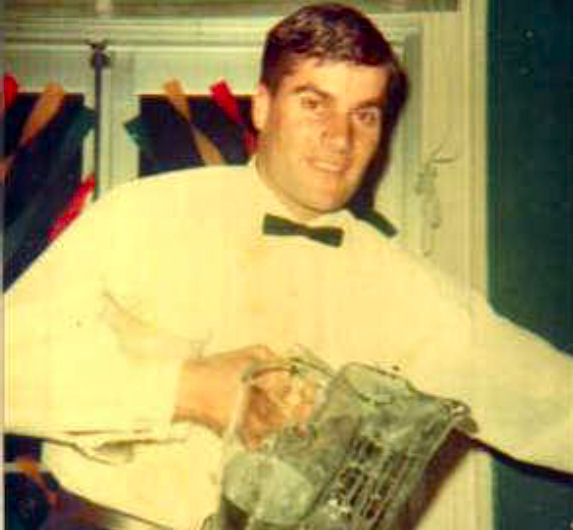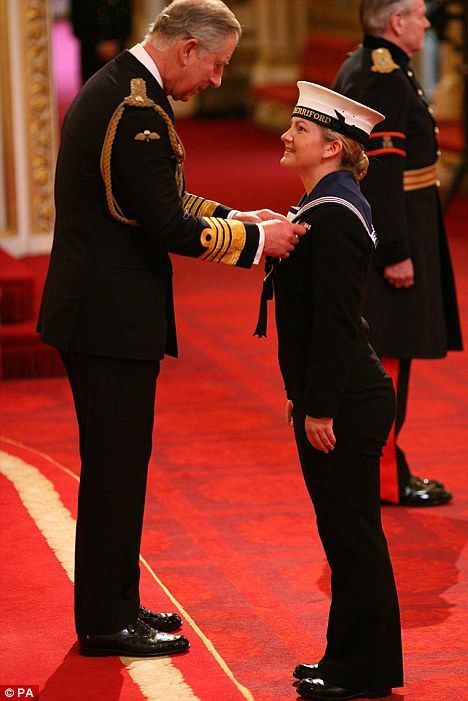|
Radschool Association Magazine - Vol 31 Page 8 |
|
Privacy Policy | Editorial Policy | Join the Association | List of Members | Contact us | Index | Links | Print this page |
|
|
|
Ex-Service superannuation.
Once again, Victorian Senator Steve Fielding, leader of the Family First Party, has taken up the baton on behalf of Ex-Service men and women’s superannuation issues. He is to be thanked for his assistance.
You can read his letter to the Minister HERE
Airman’s Ball.
Back in the late 1960’s, believe it or not, people used to have balls – the dancing type that is. These balls were organised by a group or an organisation or a committee and would usually be an annual event. They would be held on either a Friday or Saturday night, in a hall or large room, and people would spend hours decorating the hall or room with streamers and balloons and bunting and other coloured stuff. Tables and chairs would be set up at one end of the hall or room and people would actually sit at these tables and talk to each other.
These balls were the social event on the calendar and as attendance numbers were limited by the size of the hall or room, getting a ticket to "The Ball” was a much sought after occurrence. And, as funny as it may seem, the blokes usually bought the tickets and then asked a girl whether she would accompany him. Those going would spend most of the day getting ready, the girls would either buy or make a new dress and spend some time at the hair dresser, the blokes would have the suit at the dry cleaners, get a hair cut and make sure the car was clean.
Then, on the night, once everyone was all dolled up, a strange ritual would take place. The bloke would get into his car and drive to where the girl lived, usually present her with a small flower, then walk her out to his car, open the car door for her to get in and escort her to the ball – and all this happened at the unearthly early hour of somewhere around 7.30pm.
Then, at the hall or large room, someone would inspect the attendee couple’s tickets and allow them entrance and someone else would escort them to a table where the boy would pull back the chair to allow the girl to sit.
And, as DJ’s had not yet been invented, the group or organisation or committee that organised the Ball would engage a live band to produce music and the boys would ask the girls whether they would like to dance and couples would actually hold each other while on the dance floor.
Strange goings on indeed!!
These strange events were reported to have occurred at RAAF Richmond back in the late 1960’s. Here’s proof (the photos are reprints from slides and not the best quality, and we hope we don’t get anyone into trouble………)
|
|
Dallas Priester and Sue. |
|
|
|
Erin and Graham "Blue" Silk. |
|
|
|
Rod Nedwich and Partner |
|
|
|
Kev and Sue Trimmer |
|
|
|
Marie and Trev Benneworth |
|
|
|
Bill Johnston (Deceased) with his future bride. |
|
|
|
Robyn and Dick Salter |
|
|
|
Jim Cameron and Anne |
|
|
|
Robyn and John Boyne |
|
|
|
Terry "Dollar" Geary and Chrissy. |
|
|
|
Ken White and Partner |
|
|
|
Peter and Judy DeJonge |
|
|
|
12th Man, John Broughton. |
|
|
|
A Priest was about to finish his tour of duty, and was leaving his Mission in the jungle where he has spent years teaching the natives when he realizes that the one thing he never taught them was how to speak English. So he takes the chief for a walk in the forest.
He points to a tree and says to the chief, 'This is a tree.' The chief looks at the tree and grunts, 'Tree.' The Priest is pleased with the response. They walk a little further and he points to a rock and says, 'This is a rock. 'Hearing this, the chief looks and grunts, 'Rock.' The Priest was really getting enthusiastic about the results when he hears a rustling in the bushes. As they peek over the top, he sees a couple of natives in the midst of heavy sexual activity. The Priest is really flustered and quickly responds, 'Man riding a bike.'
The chief looks at the couple briefly, pulls out his blowgun and kills them. The Priest goes ballistic and yells at the chief that he has spent years teaching the tribe how to be civilized and be kind to each other, so how could he kill these people in cold blood that way?
The chief replied, 'My bike.'
|
|
Who said size matters? Ian Greenacre
She stands precisely 5ft tall in her everyday shoes and her smile is disarmingly sweet. Kate Nesbitt doesn't immediately fit the image of fearless military hero, not off the battlefield at least. But there are probably few people a critically injured soldier would rather meet in the chaos of a desert gunfight than this 21-year-old blonde in full flight.
And the sight of her sprinting through an Afghan war zone under heavy machine gun fire is almost certainly one that Lance Corporal John List will remember for the rest of a life which he now owes to her astonishing display of courage.
Kate, a medical assistant serving as an Able Seaman with the Royal Navy, raced 70 yards to the stricken soldier's side as he nearly choked to death from a gunshot wound to the mouth. She cut open a temporary airway and treated him for 45 minutes as rockets whizzed overhead and bullets thudded into the ground nearby.
Late in November 2009, her 'inspirational' bravery was rewarded at Buckingham Palace when she became the Navy's first woman to be invested with the Military Cross.
Then, with a few modest words, she underlined the remarkable spirit of loyalty that bonds Britain's servicemen and women on the front line. 'I promised my friends and comrades I'd be their medic,' she said. 'I promised I'd be there if they ever needed me. They needed me that day - so when the call came, that's just what I did.'
|
|
Medical Assistant Kate Nesbitt receives the Military Cross from the Prince of Wales during investitures at Buckingham Palace in London |
|
|
|
Kate stepped into the history books as only the second woman to be awarded the MC, one of Britain's highest gallantry awards, as well as becoming the only female MC Wren. Presenting her award, the Prince of Wales bowed to what he called her 'extraordinary' heroism.
Her citation read: 'Under fire and under pressure her commitment and courage were inspirational and made the difference between life and death.'
She works at Derriford Hospital in Plymouth and was attached as a medic to 1st Battalion The Rifles on duty in the Marjah district of Helmand when her unit came under fire from a Taliban ambush.
'I heard "man down, man down'' on the radio and I knew I was needed,' she said. 'I got the location details and just sprinted. When I first saw him, I didn't think he was going to make it. A round had gone through his top lip, ruptured his jaw and come out of his neck. He was struggling to breathe and choking on his own blood. Bullets were whizzing around my head and shoulders and hitting the ground all around us. The Taliban knew they'd got someone and they were targeting us.'
Lance Corporal List (right), who is also 21 and from Devon, was airlifted to hospital. Back in the battle zone, Kate still had his blood on her face in a photograph taken before she moved on to her next casualty. Back in the UK and having made a good recovery, Lance Corporal List said of the incident: 'I felt the impact go through my jaw, and the next thing I knew I was on my back. I thought that was it. Then Kate appeared from nowhere, reassuring me everything would be OK. Kate says to be called a hero is too much. I say it could never be enough.'
Kate comes from a Naval family - her father Clive Nesbitt served in the Royal Marines for 22 years, her brother Dan is on HMS Ocean, and her other brother Lee is undergoing medical training with the Royal Marines. Her father revealed she had not told him exactly what she did, to stop him worrying. Mr Nesbitt said: 'I was totally surprised when I found out about it from the authorities. She'd completely played it down and only mentioned it in passing.'
Yesterday at the palace she held her medal for the cameras and declared: 'It was the biggest shock when I got the news. But being here today made it all seem real. It has been so special. When I looked over and saw my mum and dad in the audience, it was the proudest day of my life.'
Also honoured for his bravery was Lance Corporal Colin Spooner, who carried on giving orders after receiving 48 shrapnel wounds when a mortar round landed behind him in Afghanistan. The 22 year old from Selby, North Yorkshire, refused to be carried back to his transport, fearing that the burden would put his men at risk, and instead insisted on walking.
Yesterday he said he would do the same again, and despite constant pain and difficulty standing for long periods, he hopes to return to Afghanistan.
|
|
Pommy Yachts.
The British Armed Forces are running Exercise TRANSGLOBE, involving the Royal Navy, Army and the RAF, each sailing a Challenge 67ft steel-hulled yacht around the world over a 12 month period. The aim of this Training Exercise, which began in June 2009, and which is the largest ever undertaken by the British MOD, is to develop the personal qualities essential for members of the UK's modern fighting forces. The year-long voyage is broken up into 13 separate stages or ‘legs’, each of which has a different skipper and crew. Some of the crew are very experienced sailors, whilst some are rank novices; very few have completed anything like the 5 week non-stop ocean passages that most legs comprise.
The 3 yachts are:
Adventure of Hornet (Navy), Challenger of Hornet (Army) and Discoverer of Hornet (Air Force), all are Challenge 67 foot yachts that were manufactured in the early 1990s for Chay Blyth’s British Steel Challenge and BT Global Challenge ocean racing events. The UK Ministry of Defence acquired four of the Challenge 67 yachts to enable the Services to undertake ocean voyages.
See inside the yachts HERE
During each leg, the crew members sleep in cabins of
3, with a canvas sling each for a bunk and a single small drawer to
contain all their gear and personal items. Watch systems vary
considerably with each crew, but a normal routine might be 4 hours on
watch and 4 hours off watch - for the whole passage.
As part of the round the world challenge, the three yachts were entered in the recent 2009 Sydney Hobart and are seen below at Constitution Dock, Hobart, on the 3rd January, 2010. The Rolex Sydney Hobart is the sixth race in the thirteen “leg” Exercise.
The Discoverer of Hornet (Air Force) finished 58th in the Sydney/Hobart, with a time of 4 days, 8 hours and 43 minutes, beating the Adventure of Hornet (Navy) which finished 65th in 4 days, 13 hours and Challenge of Hornet (Army) which finished 79th in 4 days, 15 hours and 33 mins – as you would expect!!!
The quickest boat in the recent Sydney Hobart was Alfa Romeo which completed the race in 2 days, 9 hours and 2 minutes, the slowest was Polaris of Belmont which completed the race in 5 days, 7 hours and 38 mins.
|
|
|
|
The boats, above, at Constitution Dock, Hobart, 3 Jan 2010. |
|
|
|
Heard on the BBC.
Interviewer: “Oscar Wilde, Adolf Hitler and Jeffrey Archer have all written books about their experiences in what: - Prison, or the Conservative Party?” Contestant: “The Conservative Party”.
Interviewer: “Which is the largest Spanish-speaking country in the world?” Contestant: Barcelona. Interviewer: I was really after the name of a country. Contestant: I'm sorry, I don't know the names of any countries in Spain .
|
|
|
|
Back Go to page: 1 2 3 4 5 6 7 8 9 10 11 12 13 14 15 16 17 18 19 20 Forward |

